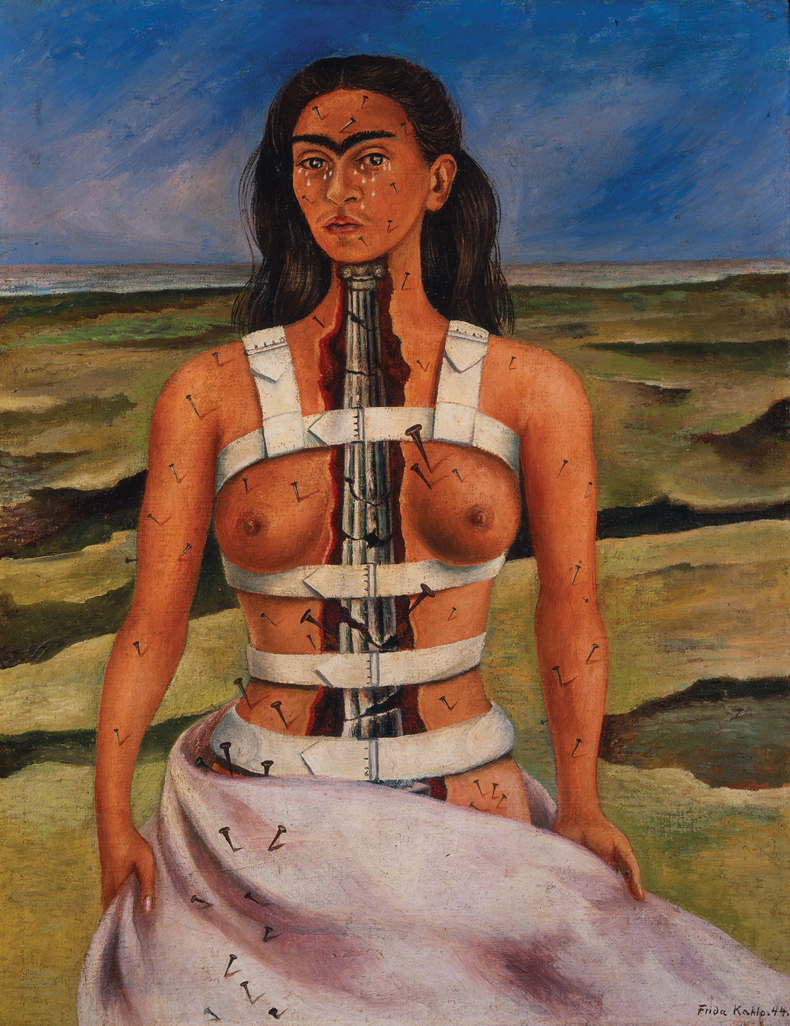
so im currently writing a term paper on the symbology of Frida Kahlo in her art...wow. all i have to say is that Frida is the woman of my dreams. she was a very stong stubborn woman who had horrible things happen to her. She had Polio at a young age which left her left leg degenerated, she got into a terrible bus accident that put her into a body cast for 6months, and had almost 35 back and torso surgeries from that accident. Also was deemed infertile after the accident. wow. and she still painted. she didnt have this dream to paint glorious things, she just painted what she was thinking, and that was it. she didnt want to paint perfect little flowers, she wanted to paint her spinal cord, and her in a hospital bed, because either that was were she was, or how she was feeling. amazing. the paint that this woman experienced was incredible. married to a horrible man, but loving him anyways, they made a historically excentric couple. frida's life makes me think of how great my life is. I may not have the amazing talent or creativeness of frida, but i think i have her life force. no matter what happens she still pulls through,a nd survives. Going through and thinking about all the new changes in my life coming up and just the things going through my head, I am so glad that I have a life force like that. I am glad that I am a strong person to handle anything that is thrown at me. I know after writing this paper, i will have more of a handle on my life, my thoughts, and where i am going. I guess I am glad that i had to change my topic at the last minute...i am actually glad that I have to write this god forsaken paper. even though i havnt really started...o well. heres to frida.
i am graduating soon. it's really weird, and 5 years in the making. i dont know what to do with myself. I know I am moving to N.C. and I am so excited to be someplace warm for most of the year. I will get a bangin tan, and have the weather be sunny everyday. so excited. but finding a job and a place to live with mike seems difficult. trying not to think about these things too much right now. gotta concentrate on gradauting and spending a little time with the fam b4 i leave. my new nephew spencer is adorable. wish i had an electric version to post. no such luck. havnt downloaded them yet.






